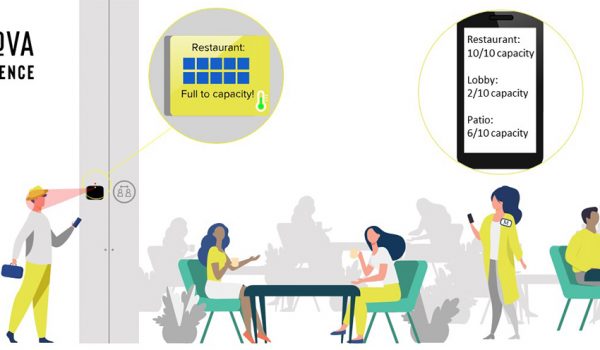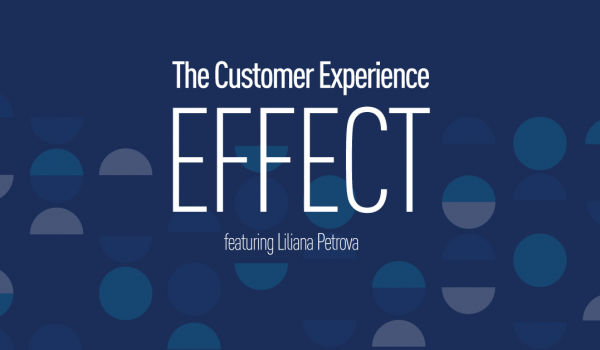
Extend the Customer Journey with AI
Superior customer experience hinges on seamless customer journeys. We build strategies around this, design CX programs, and map the journeys of customer personas, all with the aim to meet customer expectations and provide wow moments along that journey. But what happens when the customer journey extends beyond the steps we designed for them to take? How do we deliver customer experience – and manage brand reputation – when the customer chooses to extend their journey with us? This is another problem AI tools position us to solve.
Extend the Customer Journey
Let’s analyze this in practice, using a restaurant customer as our example. Restaurants and hospitality groups design guest experiences that start with the reservations, or booking, process. Customer-centric leaders in this space create digital, in-person, phone, and other experiences that make the reservation process easy, pleasant, and branded. As well they should. Making the reservation is often the first interaction your guest has with you. And, we all know, first impressions go a long way to creating satisfaction and loyalty (and to ensuring memorable, positive experiences). But what about last impressions?
In a connected world like ours, the journey with the customer does not end when they leave our premises. By extension, our responsibility to hear, respond to, and serve the customer, does not end then, either. The customer may choose to extend their journey with us by leaving reviews on Yelp, Google, or other channels.
With that segment of the customer journey playing out in the public space, ungoverned by our design principles, and largely uncontrollable, how we engage with the customer there is pivotal for customer satisfaction, loyalty, and reputational management.
Tackle High Volume Customer Reviews
Between app access on mobile devices and online desktops, Yelp received over 70 million unique visits in Q4 2020. So there is no doubt your customers are leaving – and reading – online reviews.
A recent client of ours gets hundreds of reviews on their restaurant properties weekly. This creates a significant customer experience opportunity when we think of a review as an extension of the customer journey. It also creates a significant amount of work for already taxed CX and marketing team members.
Every reviewer is an individual customer representing a lived experience. That experience matters to them. And their customer happiness matters to you (or at least it should). But responding to those customers in a meaningful way, at scale, can feel unsustainable. Especially if there is not a clear path to response and issues resolution.
We saw this with our client. They struggled to define who owns online review response. The volume is high, so responding is time consuming. But the nature of those responses makes it a relatively low-touch moment along the journey. The experience and service experts tackle the demands of designing and delivering customer experience across the key moments along the customer journey. Responding to reviews does not seem like their immediate sphere of responsibility. So, whose is it? This client is not alone in asking this question. It is difficult to assign ownership to this extended moment on the journey, despite how important it is to maintain continuity with the customer.
Often, the job falls to interns. From a workflow perspective, this makes sense. From a continuity of messaging and customer connection perspective, it misses an opportunity. Enter AI. What we are finding is that AI tools help restaurants (and other businesses) respond to reviews in meaningful ways. When calibrated intentionally, ChatGPT can reply to customer reviews in a unique brand voice, acknowledge responsibility for experience or service mis-steps, and present appropriate solutions.
Positive Reviews Get Lost in the Volume
Customer review responses are not only about issues resolution. And ChatGPT helps there, too. When calibrated intentionally, ChatGPT tools can respond to positive customer reviews in a way that shows the brand supports and values customers. Too often, because of volume, brands end up ignoring positive reviews. A positive review is not a fire to put out, so it loses the battle for attention. Or, brands respond to all positive reviews with the same, pat answers. “Thank you for your feedback.” “We’re so happy you enjoyed your experience!”
Does that sound familiar? Yes. Does it sound personal, or meaningful? No. These are “robotic,” emotionally disconnected responses. They fail to reward the customers who chose to extend their customer journey by offering you unsolicited, positive feedback in a public space. In leaving that positive review, your customer gave you extra time and attention. In return, your customer deserves time, attention, and personalized responses from you. AI tools give you that time.
Calibrate to Create Continuity of Experience
Before we go deeper into how to use ChatGPT to respond to customer reviews, remember to set your expectations for how to use AI effectively for customer experience. Amid the fervor around AI solutions for CX and other business applications, we continue to remind our clients that AI is just a tool. A powerful tool, for sure. But a tool that you must design and deploy in alignment with your customer experience strategy. So, as a tool, what can you expect from AI in the extended customer journey space of online customer reviews and communication?
For starters, recognize – and embrace – the fact that, in this scenario, a tool like ChatGPT is for a conversation, not a transaction. That means it is your job to calibrate your AI to ensure that the tone and language you use to respond to customer reviews matches the tone and language your teams use with customers in your physical space.
Just like the customer’s choice to leave a review extends their journey with you, your response to that review extends your journey with them. The customer must feel continuity along this moment of the journey.
If you do not calibrate AI intentionally, you create a fracture in the experience. This fracture breaks trust. It compromises loyalty. And it threatens to escalate the impact of a complaint in the public space. On the other hand, when you calibrate your AI solution to replicate the rapport you establish with customers in your physical space in the online customer review space, you capture an opportunity to strengthen your customer relationship. And to model that relationship publicly, in a way that bolsters your brand to a larger audience and inspires customer loyalty.
Make Room for Creativity
We have heard some pushback against AI claiming it reduces creativity. We offer a different perspective. Encourage your customer experience and marketing team leaders to engage with AI as a way to leverage it as a tool to communicate and connect in alignment with experience strategy and brand identity. Then, spend some time feeding the tool with the information and direction it needs to deliver responses in line with your strategy and identity.
This takes real work. And real time, from leaders and team members who are experts in your brand experience. Engineering the prompts is not a task for interns or new members of your team. It must be guided by the same voices and experts who build and guide your brand experience across channels. Not just for continuity, but for accuracy and impact.
Approaching AI for customer experience in this way untaps a wealth of variety in review responses. And it does so quickly. The permutations of how to say what your customer needs to hear are nearly endless. As your teams interact with, develop, and improve the AI responses, it spurs their own creative genius. You then start to get consistency and quality without repetition. Now some irony for you… the bot makes you sound less like a robot!
Beyond that, the intentional investment of time upfront to set up the AI model for success gives your leaders and their teams more room for other creative endeavors that benefit your brand.
Target Customer Personas for Relevant Communication
Understanding, communicating to, and delivering targeted experiences for customer personas is a gold standard of customer experience design and delivery. In fact, knowing your customer persona and how you serve that persona is key to brand loyalty. By and large, many brands, especially those who have solid customer experience strategy, do a good job of keeping those key personas at the center of their journeys and their brand communication.
When the journey extends beyond its designated boundaries into the online review space, brands face a challenge to maintain that same level of persona-driven customer communication. Contrary to some assumptions about AI, leveraged properly, the tool can target responses to customers in ways that speak directly to your customer personas, and add value for them. Again, the tool needs your guidance. You and your teams know your customer personas inside out. If the AI tool is a de facto member of your team (and you should look at it that way if you are making the choice to use it), then the tool must also learn how to speak to each customer persona.
Back to feeding the AI what is needs to succeed for your brand. Let’s say your customer is a mom dining out with children and leaves a review about that experience. In calibrating the response, go back to the AI after its first pass and say “thank you.” Remember to communicate with the tool like it is a person – this is a conversation, not a transaction. Bake that into the design of the responses so the responses reflect the same tone. Once you have done that, help the tool to hone the response for the persona in question. Type in “now, respond like you are talking to a busy mom who is frustrated about the experience her children had.” You will notice the tone of the next version of the ChatGPT response changes. It is targeted to the persona with whom you are communicating. Often, a few more steps are required from you to help the tool deliver the response that will best communicate with your customer.
Connect AI to Brand Strategy
If this feels like a waste of time, it is not. Calibration is the key to success. And that does require an up-front time investment. That is how we get the bot to sound less robotic than our overworked teams. So, look at AI tools within the context of brand and customer experience strategy. Then, path out the best ways to leverage those tools along the customer journey.
Folding AI into customer experience can feel intimidating. The more we work with it, the more we see it is neither the quick fix, nor the robotic monster that people think it is. At this stage of its development, AI can help you deliver better experiences, generate loyalty, and protect the brand you and your teams work so hard to build.
For help assessing how AI can support your CX objectives, or how to build it into your customer journeys, set up a call with us. We are happy to help you uncover where this tool – with the right guidance – can take you.
















































































